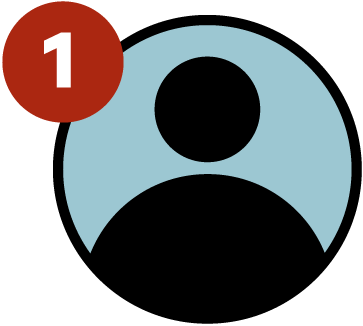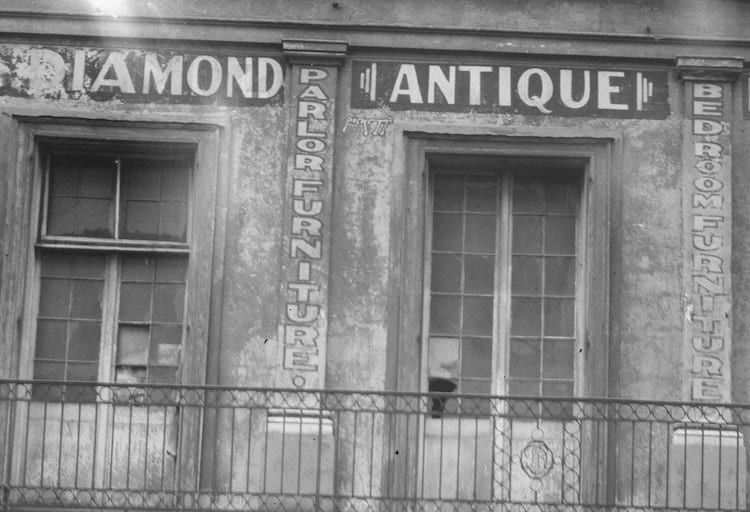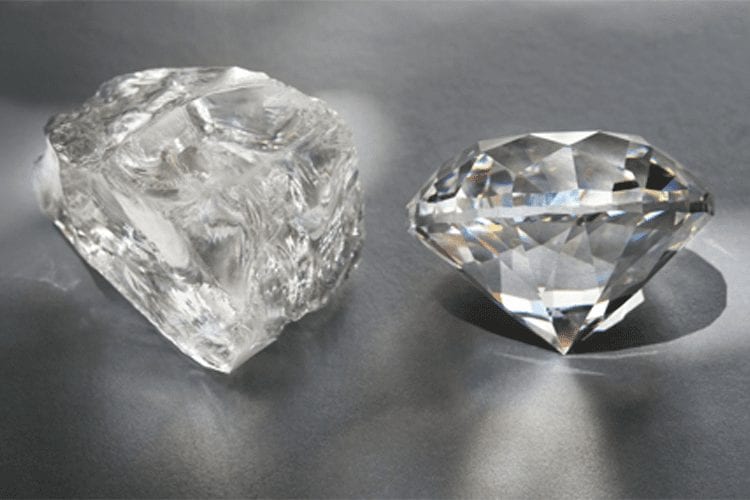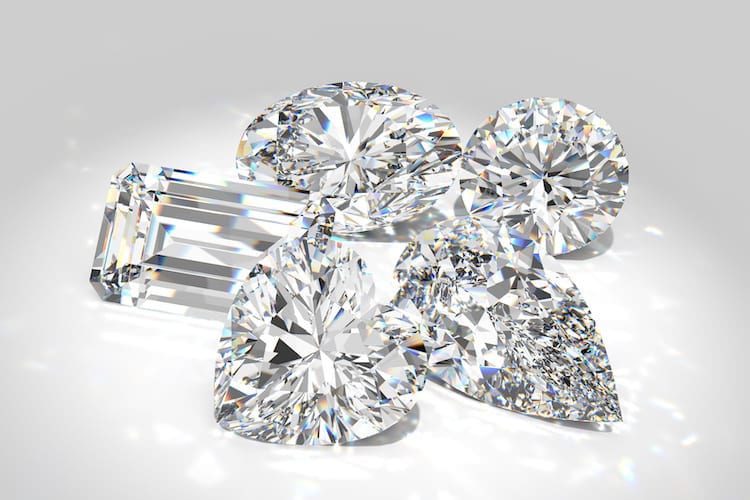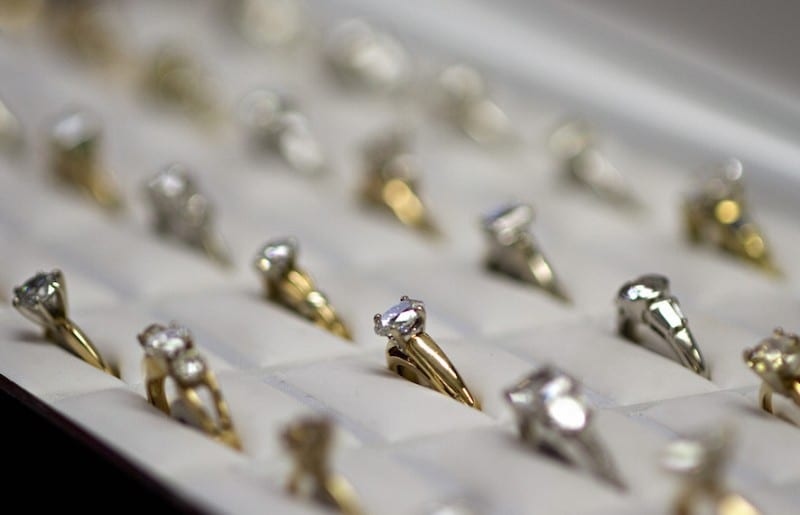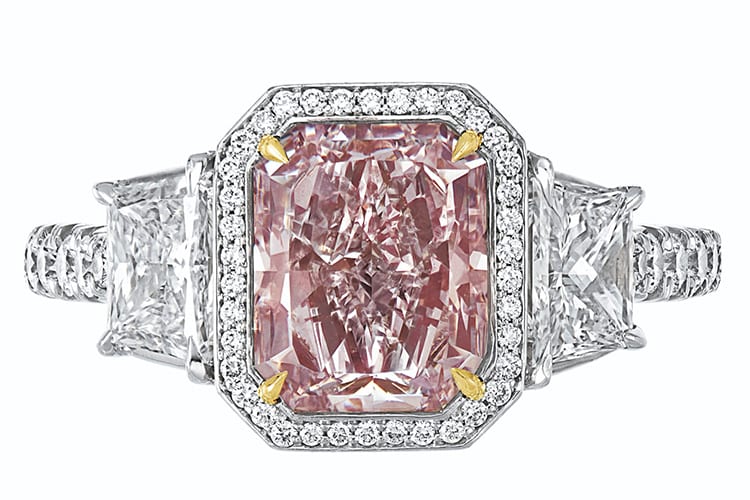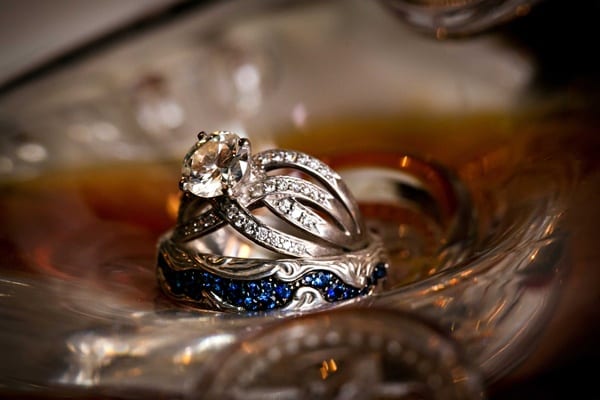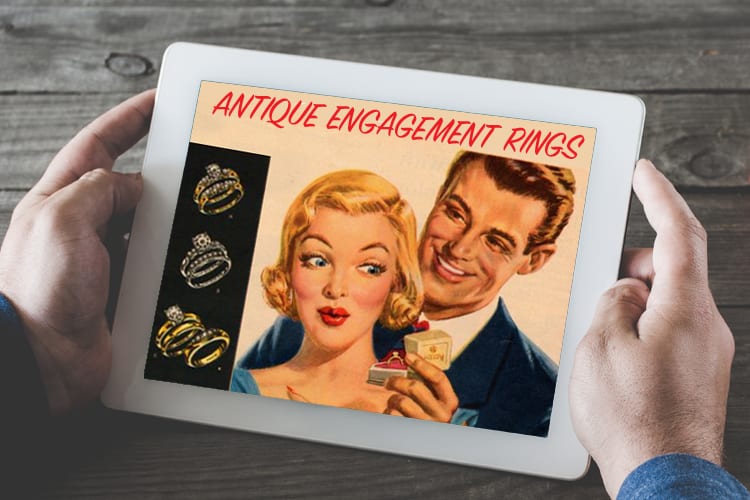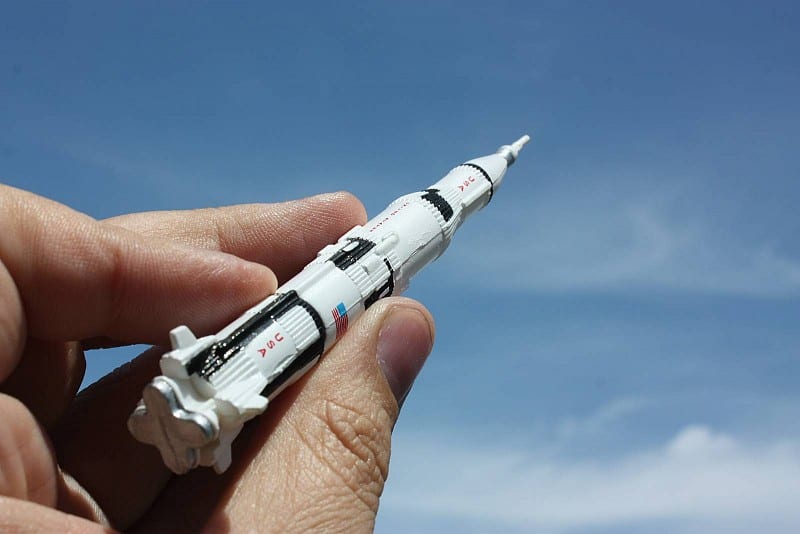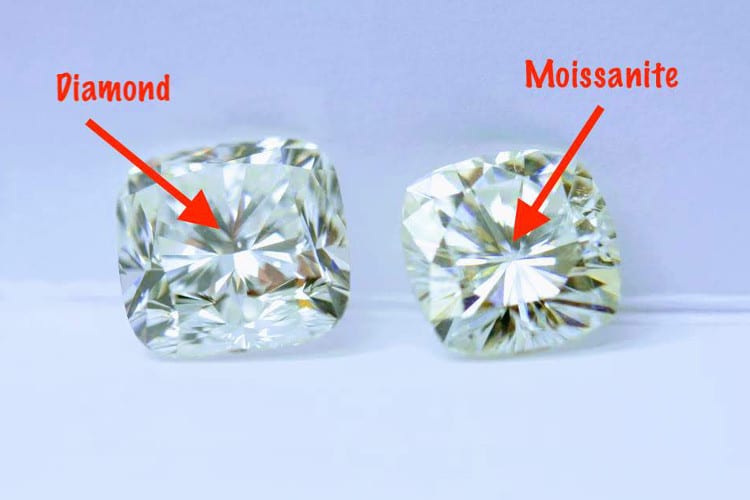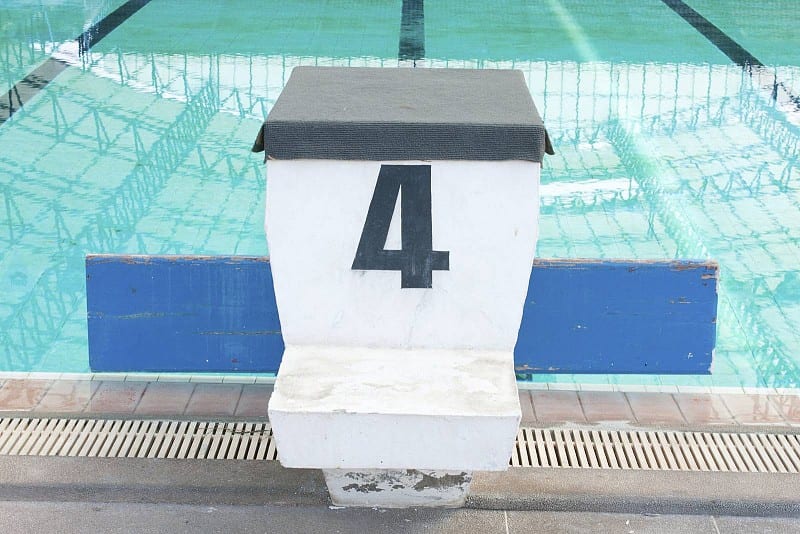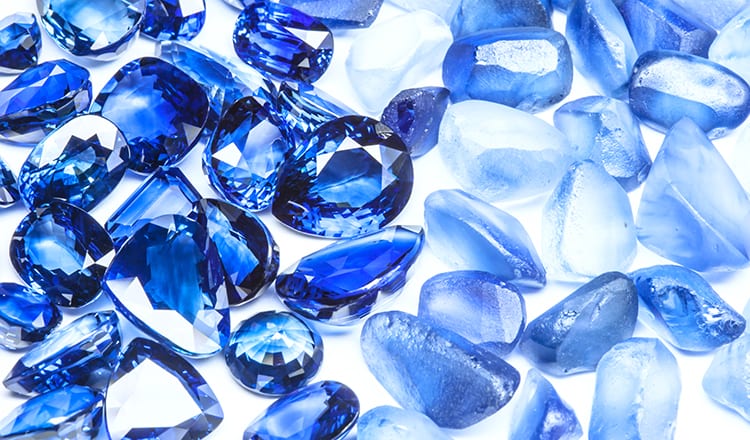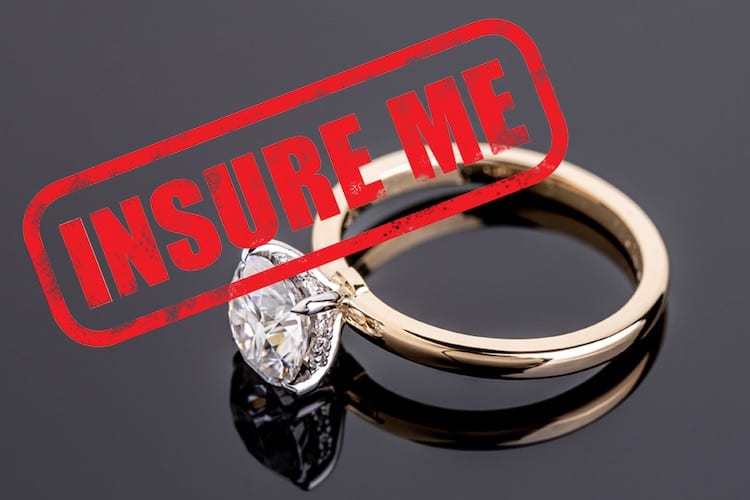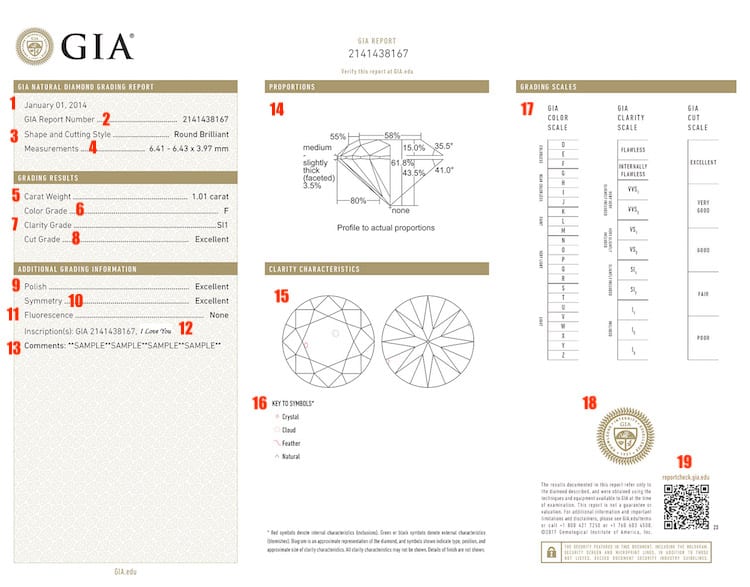
Ever wonder where a diamond’s price comes from? It’s not just about the size of the gem (in carats) or the store where you get it (like Tiffany vs Kay). Any diamond you buy should come with a report from the Gemological Institute of America or a similar gemological organization or laboratory —though GIA is considered the gold standard among the industry’s most reputable jewelers and diamond dealers. It’s a dossier, first developed in the 1950s, that documents and assesses a diamond’s characteristics, including the Four Cs, as well as a lot of other information that can be confusing — and overkill — when you’re just trying to find the best diamond you can afford.
The purpose of a GIA report is to verify what the jeweler/seller is telling you. This objective data also provides some context as to how the jeweler arrived at their price (spoiler alert: higher quality stones fetch higher price tags).
In theory, a GIA report is an awesome diamond-buying tool — until you actually try to read one online or in a jewelry store. The info is so detailed, so “inside baseball” that you’re often left feeling even more uncertain and out of your league.
But when you actually understand what a GIA report is telling you, you should feel better, reassured and ready to strike. That’s the goal anyway, and we can help. Below, we’ll explain each and every section of a sample GIA report to get the shorthand, bare-bones info that will help you make a diamond-buying decision. Ideally you’d be able to see the actual diamond you are buying too, even if online. And for that reason, we recommend sites like Blue Nile and James Allen.
1. Date
This is the date the diamond was examined and evaluated at the G.I.A. Ideally this date was in the last three years. If it’s older than that, it’s recommended that you get a fresh report as the diamond could have since been scratched, chipped or damaged — and may have a different value as a result.
Go from zero to hero in five minutes: At James Allen or Blue Nile, you can adjust price ranges and other characteristics to see how many carats your budget buys. Their search tool is great. Their highly competitive pricing is too.
2. Report Number
Each GIA report has a unique number that gets recorded in a global database — it’s like the diamond’s personal I.D. or social security number. It also appears at the top of the certificate, in the center above proportions. And it has been inscribed in the diamond (at the girdle area) so anyone can verify that the report matches the diamond.
3. Shape and Cutting Style
Just the official specs, including an outline of diamond and faceting patterns created with the cut. It could list whatever shape or cut — think round, oval, emerald, pear, Asscher or marquis, among others — and if it’s a “brilliant” cut, meaning it’s a particular form, cone-like, that has numerous facets giving it exceptional brilliance.
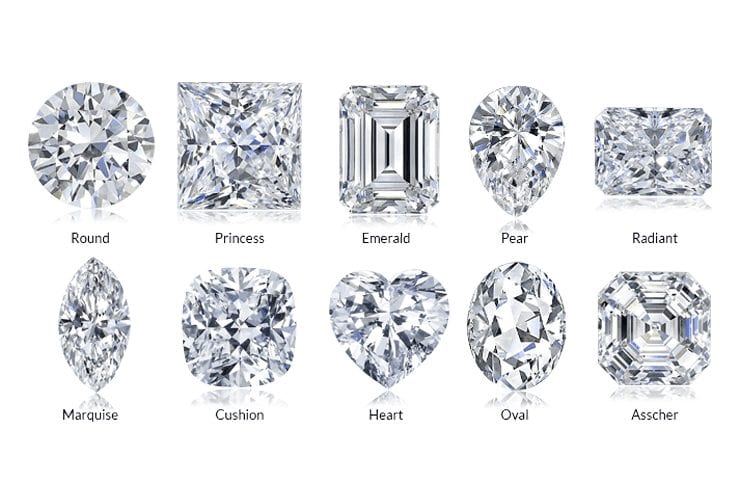
4. Measurements
The physical size of the diamond assessed in millimeters, according to the following formula: “minimum diameter – maximum diameter x depth” for round diamonds and “length x width x depth” for other shapes like emerald-cuts and pears.
5. Carat Weight
The weight here is represented in carats and recorded to the nearest hundredth of a carat — the example shows 1.01 carats. For the record, one carat is equal to ⅕ of a gram or 0.02 grams. Most engagement ring diamonds are one carat. Bigger is not always better. Carat weight is one of the four grades in the the 4Cs… the other three are listed below.
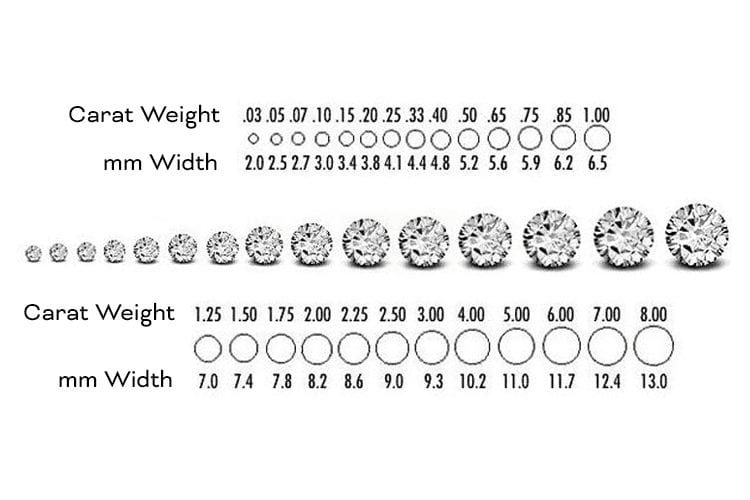
6. Color Grade
Diamonds are graded on the absence of color using a scale of D to Z where D is best and Z would indicate some yellow or brown color — the example shows an F grade, which may be the only time that getting an F is a good thing. Compare the color grade with the GIA’s official color scale on the far-right panel of the report to see if this diamond is considered colorless (good), near colorless (still good) or faint (plenty of K-color diamonds can still look pretty white). An asterisk (*) next to the color grade indicates that a color treatment was detected.
Bottom line: Color grade affects price. You can see it with your own eyes at James Allen, where you can literally spin the diamond around 360 degrees.
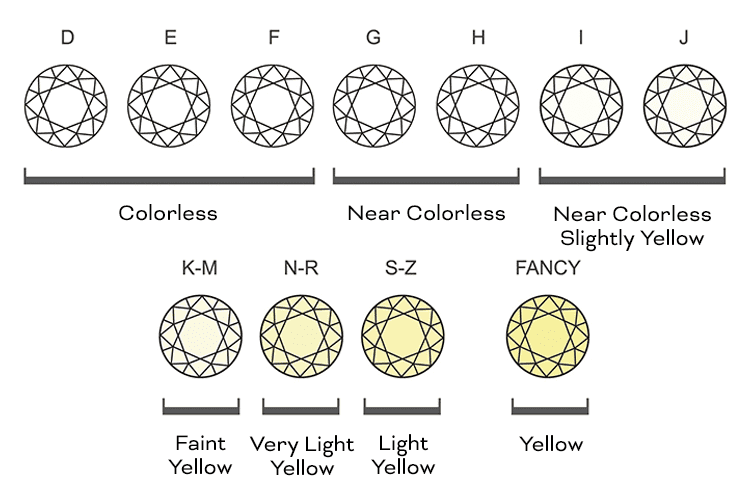
7. Clarity Grade
This is an assessment of the absence of inclusions and blemishes, graded on a scale from Flawless to Included. Flawless diamonds are crazy-rare; many nice-looking diamonds have clarity grades of SI1 (as shown in our example) and SI2. Remember: Often the naked eye tells you all you need to know — if you can’t actually see the inclusions, it doesn’t matter if they’re there unless you are planning to re-sell the diamond.
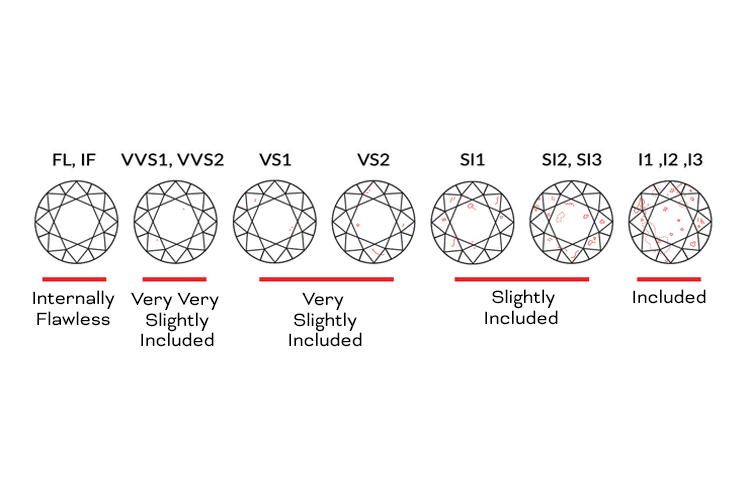
8. Cut Grade
Considered by many to be the single most important of the 4Cs because a bad cut means there’s terrible brilliance, or that light does not pass through the gem in a beautiful way. Cuts are graded on a scale of Excellent to Poor. Jewelers in the bridal business are highly unlikely to buy diamonds with “Fair” or “Poor” cut grades, so our advice is not to settle for anything less than Excellent (the example shows an example cut). Also, do not confuse “cut” with shape (round, pear, Asscher, cushion, oval, etc.).
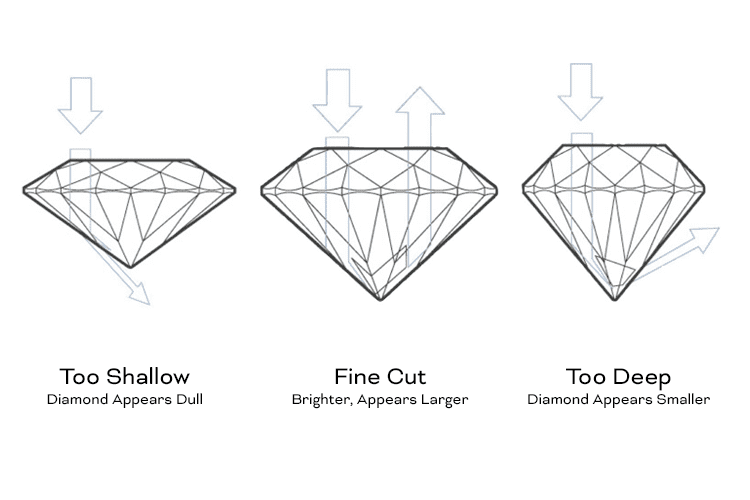
9. Polish
This is where the report evaluates the smoothness of the diamond’s surface and any blemishes created by the polishing process. As a rule, if the cut grade is “Excellent” or even “Very Good,” you’re covered as far as polish. The worst polish grade is “Poor.”
10. Symmetry
Symmetry refers to the size and placement of a round brilliant diamond’s facets in relation to one another — or, the alignment. Again, if the cut grade is “Excellent” or even “Very Good,” you can assume the Symmetry situation is up to snuff.
11. Fluorescence
Some diamonds fluoresce when they are exposed to ultraviolet (UV) rays from sources like the sun and fluorescent lamps. Per the GIA, whether or not this happens does not affect diamond quality. Period. So don’t dwell on it.
Check out our guide to brilliance, fire and scintillation or head over to our engagement ring MANual for other fine points.
12. Inscription(s)
This tells you if there’s any text, symbol, or logo on the diamond. Many diamonds that go through a GIA laboratory are inscribed with their corresponding report number on the girdle of the stone; a complementary option when a dealer submits a stone for grading, it doesn’t affect overall quality. If you’re purchasing a GIA-inscribed stone, make sure the inscription matches the number you see on the physical report.
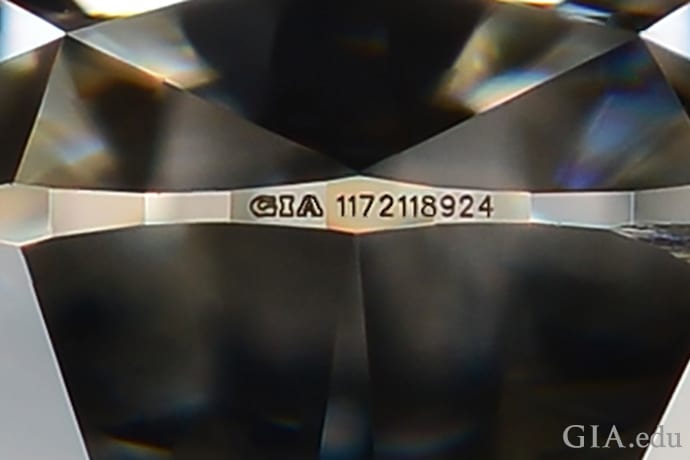
13. Comments
Here’s where the GIA graders note additional identifying characteristics or features that are not otherwise represented on the report. Pay attention if there’s info about some inclusions not being noted on the Clarity Characteristics diagram in the center panel of report. Ask the jeweler to hand-draw a diagram showing where they are if this is the case.
14. Proportions
The proportion diagram is a graphic profile representation of the diamond’s actual proportions. The impact of proportions on overall beauty may seem complicated but it’s crucial for a diamond to sparkle.
Bigger isn’t always better. Look for super sparkle at sites like Whiteflash, Brian Gavin, and James Allen. They are known as go-to sellers of ideal cut diamonds.
For those who want recommended specs: a round brilliant diamond’s table (the topmost facet or edge) is ideally at 53 to 58 percent and its depth (the distance between the table and the pointy tip at the bottom, also known as the culet) is ideally at 59 to 62.3 percent.
At the end of the day, a cut grade of Excellent makes these granular details a non-issue. Sites like James Allen offer 360-degree views of rings, which allow you to see everything without being in a high-pressure environment, like a store with sales people breathing down your neck.
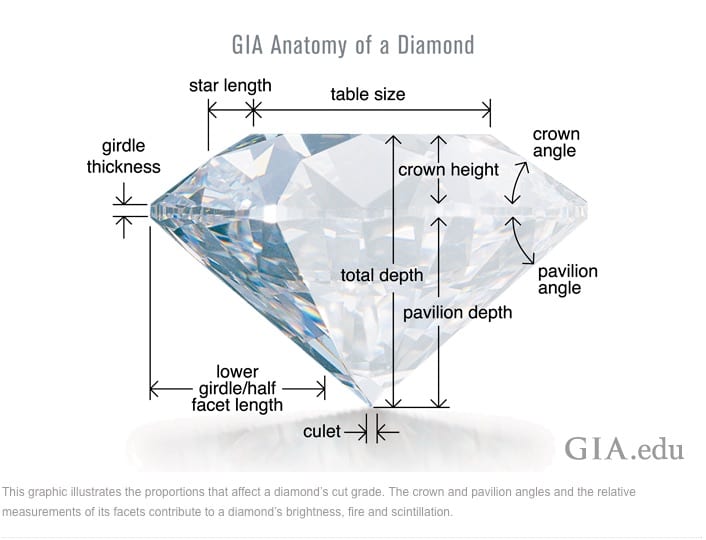
15. Clarity Characteristics
When GIA graders assessed the diamond’s clarity grade, they noted the type, position, and approximate size of the inclusions (blemishes and clouds, etc); this diagram illustrates those details. Comparing the two diamonds below, the one on the left has a low clarity score (I1), which explains why it’s less valuable than the image at right, which has a terrific IF clarity grade. They are otherwise similar (the same color and cut grades, and nearly the same carat size).
But not all inclusions are necessarily represented here. If you have any doubts, ask the jeweler to point them out or better yet, hand-draw a diagram. (Photos below courtesy of James Allen)
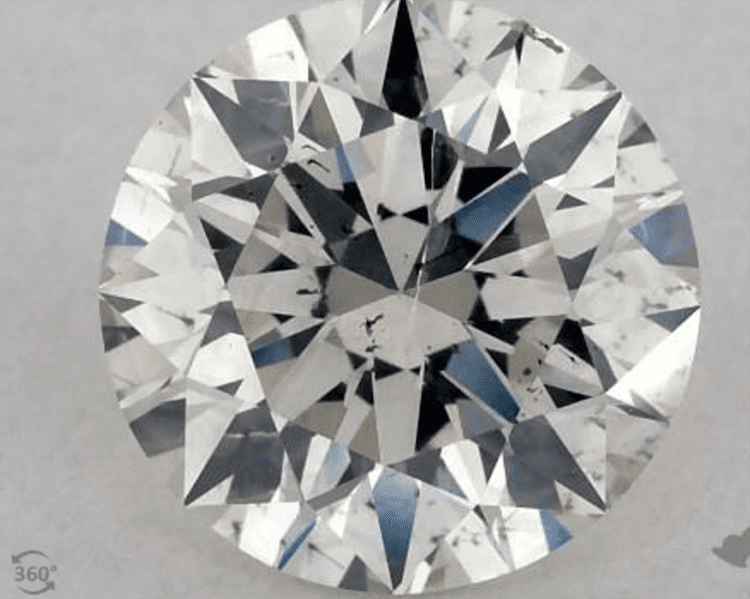
The I1 clarity grade means there are visible inclusions. 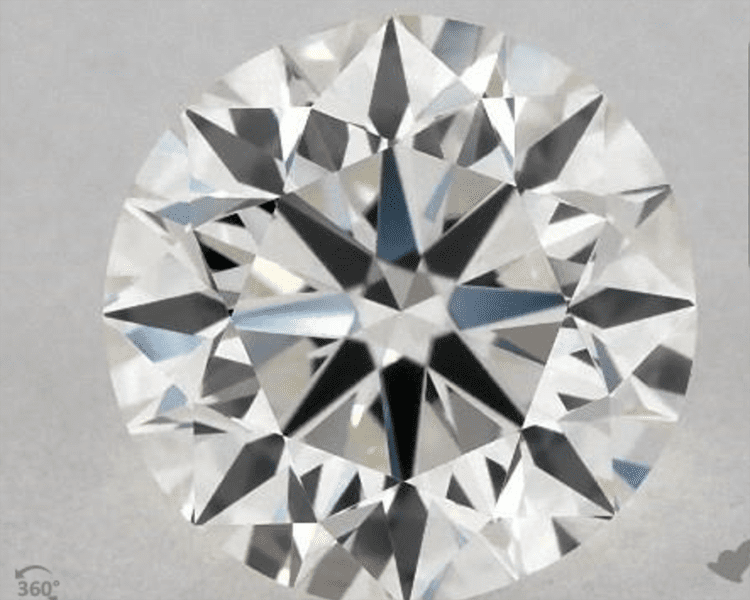
The IF clarity grade means this diamond is internally flawless.
Above, Right: 1.01-carat H-IF excellent cut round diamond. $5,330.
16. Key to Symbols
Yup, there’s more than one type of inclusion. Here are the types detected in this stone and how they are depicted in the diagram.
There are various internal and external clarity imperfections — including crystal (a bit of mineral, diamond, or other matter in a diamond), clouds (groups of small pinpoints inside a diamond, but too small to distinguish individually), feathers (any fracture or fissure in a diamond that extends to the surface), and “natural” inclusions (a portion of the diamond that didn’t get polished properly).
You can really go down a rabbit hole with the different types of clarity characteristics and how they impact quality. But the bottom line is most diamond imperfections are detected only under 10x magnification and are not visible to the naked eye. If you can’t see them and all the GIA grades align with your overall perception of the stone’s beauty and value, don’t sweat the small stuff.
17. Grading Scales
Included for your reference, these list the Color, Clarity, and Cut scales (we included above) allowing you to easily compare your diamond’s position in relation to grades that are better and worse.
18. GIA Seal
The official GIA seal authenticates the report and there are a number of other built-in security features, like a GIA logo watermark, hologram, and microprint lines.
19. QR Code
The newest GIA reports include a QR code that, when scanned with a phone, verifies the data on the report against the GIA’s online database. Open your camera app, aim it just so, and you’ll get a prompt to open up the site in Safari. It’s yet another way to ensure the validity of the report, plus it’s kind of cool to know the diamond is logged in a database, CODIS-style.
Other Certificates and Reports
Here are some other labs that offer diamond and gemstone grading reports and certificates:

